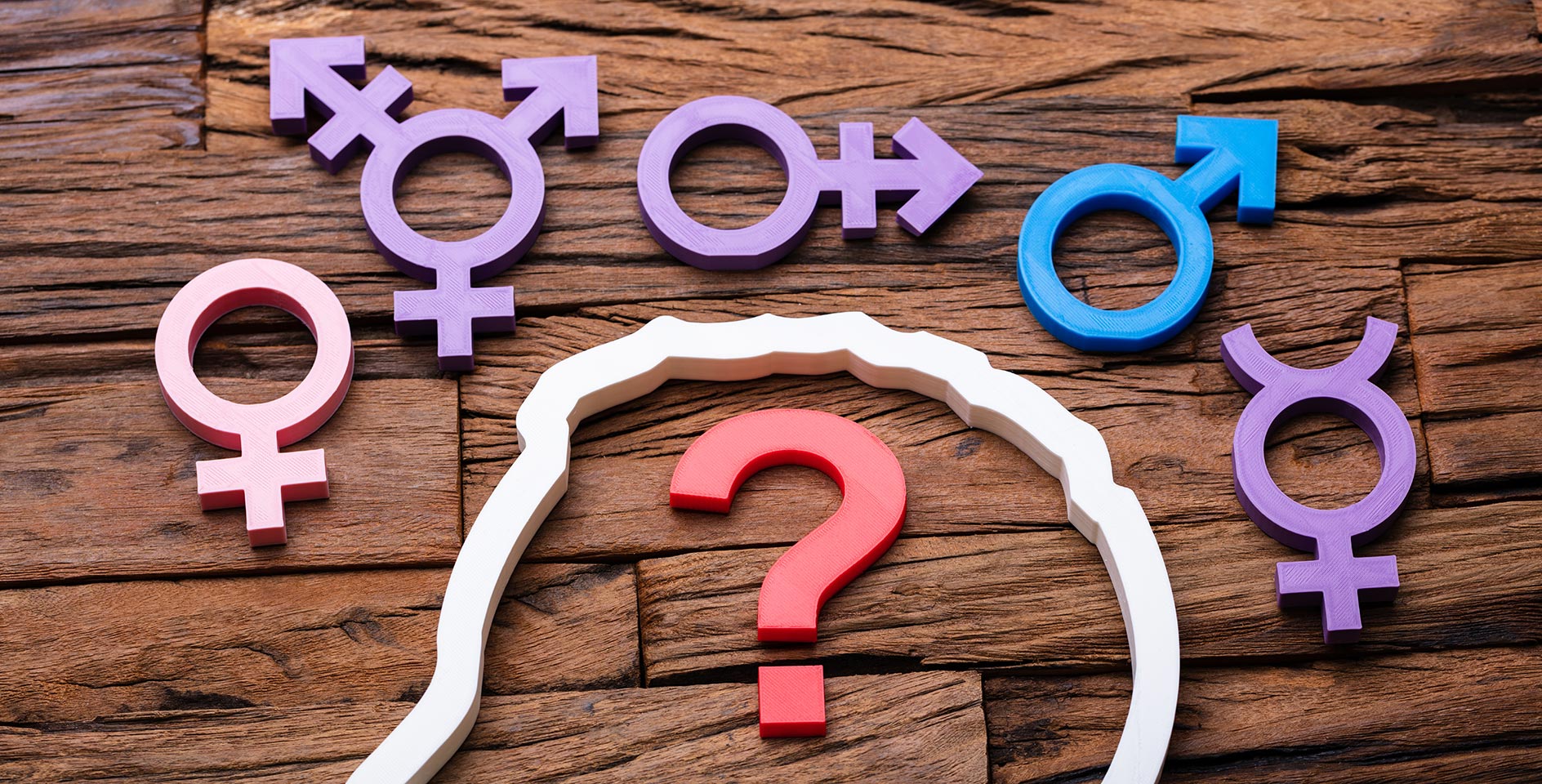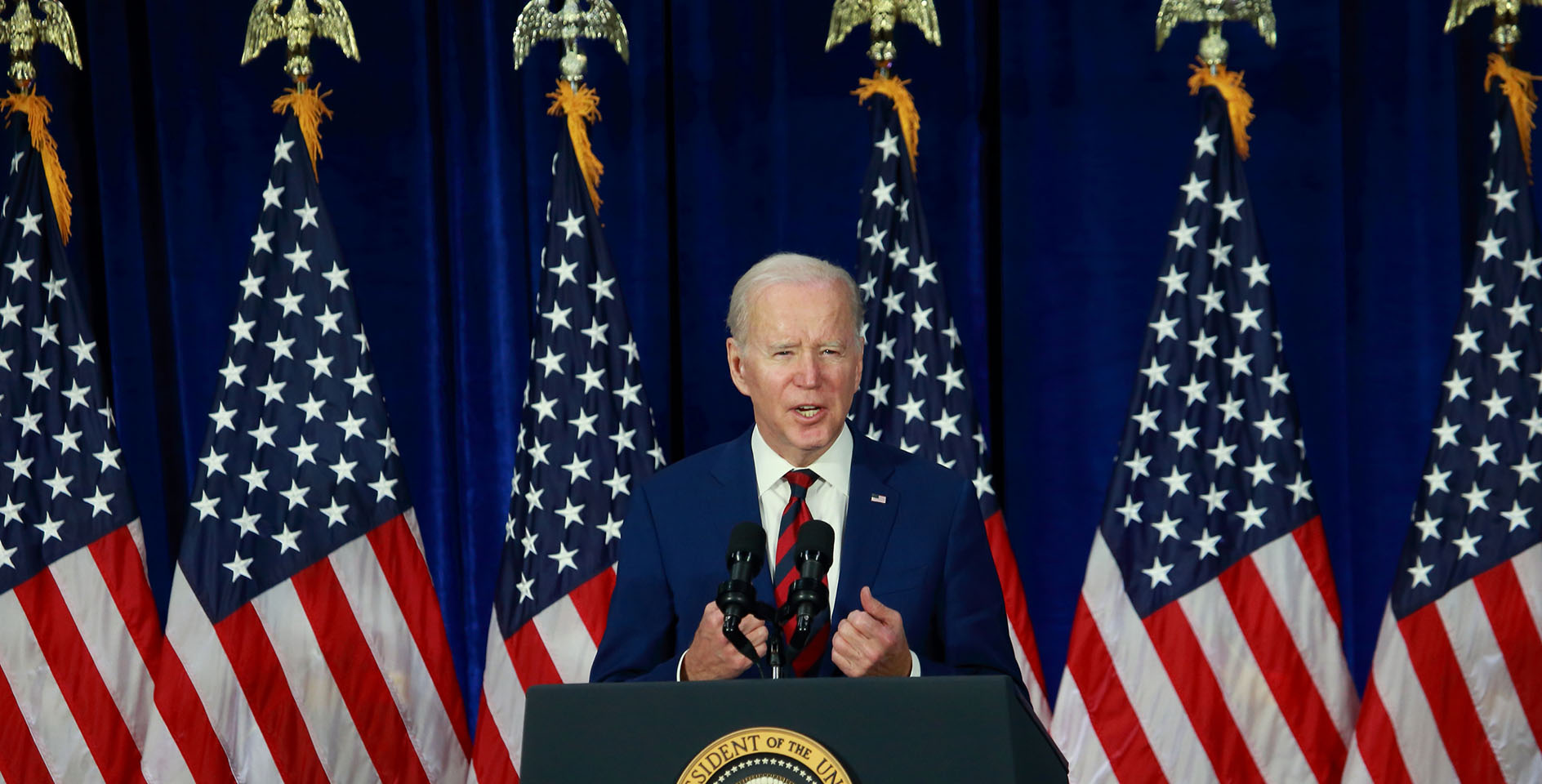Although terms like “transgender” and “gender identity” are increasingly used in the public square, many Christians are still unaware of what they mean or how broad the scope is in which they are being used. To help provide some clarification and context, I’ve provided definitions for 31 terms commonly used by the gender identity movement. This glossary is designed to help you better understand the radical and ever-expanding language used to describe elements of the sexual (and gender) revolution. In order to effectively minister to those in our communities, it is helpful to grasp the terms used by the wider culture. Our goal is to understand so that we might proclaim God’s good design reflected in the biblical sexual ethic that brings flourishing and the gospel that brings hope and reconciliation.
This is not an exhaustive list by any means — Facebook alone allows you to choose from more than 70 gender options. Even though many in the LGBTQ+ community are united around certain terms and language, it is important to note that this is an incredibly diverse community that is not always in agreement with one another and their lifestyle choices.
Ally — A term for a person who supports members of the LGBTQ+ community and who advocates for them to others.
Androphilia — A term used to refer to sexual attraction to men or masculinity that can be used as an alternative to a gender binary heterosexual or homosexual orientation. (See also: gynephilia.)
Bigender — A person who has two gender identities or expressions, either at the same time, at different times, or in different social situations. (See also: genderfluid.)
Bisexual — A person who is attracted to two sexes or two genders, but not necessarily simultaneously or equally. Although the term used to be defined as a person who is attracted to both genders or both sexes, that has been replaced by the number two (2) since the LGBT community believes there are not only two sexes or two genders but multiple gender identities. Within the LGBTQ+ community, a person who is sexually attracted to more than two biological sexes or gender identities is often referred to as pansexual or omnisexual.
Butch — A term used by the LGBTQ+ community to refer to masculine gender expression or gender identity. A nonbinary butch is a person who holds a nonbinary gender identity and a butch gender expression, or claiming butch as an identity outside of the gender binary. (See also: femme.)
Cisgender — A term used by many in the LGBTQ+ community and their allies to refer to people who have a match between the gender they were assigned at birth, their bodies, and their personal identity. Cisgender is often used within the LGBTQ+ community to refer to people who are not transgender. (In general, Christians should avoid using this term since it implies that cisgender and transgender are equally normative, i.e., the opposite of “heteronormative.”)
Femme — A term used by the LGBTQ+ community to refer to feminine gender expression or gender identity. A nonbinary femme is a person who holds a nonbinary gender identity and a femme gender expression, or claiming femme as an identity outside of the gender binary. (See also: butch.)
Gay — Until the mid-20th century, the term gay was originally used to refer to feelings of being “carefree,” “happy,” or “bright and showy,” though it also added, in the late 17th century, the meaning “addicted to pleasures and dissipations” implying a that a person was uninhibited by moral constraints. In the 1960s, the term began to be used in reference to people attracted to members of the same sex who often found the term “homosexual” to be too clinical or critical. Currently, the term “gay” is used to refer to men attracted to people who identify as men, though it is also used colloquially as an umbrella term to include all LGBTQ+ people. (The Gay & Lesbian Alliance Against Defamation considers the term “homosexual” to be offensive and recommends that journalists use the term “gay.”)
Gender dysphoria — A term that refers to the psychological condition of experiencing discomfort between one’s gender identity and biological sex.
Gender expression — A term for the manner in which one chooses to express or show their gender identity. This can be through clothing choices, appearance, or mannerisms. The term assumes a spectrum of expression between more or less masculine/feminine activities and actions.
Gender identity — A term used to refer to an individual’s personal sense of identity as masculine or feminine, or some combination of each. The LGBTQ+ community and their allies (e.g., the Biden administration) consider gender to be a trait that exists along a continuum and is not inherently rooted in biology or physical expressions.
Genderfluid — A term used for people who prefer to be flexible about their gender identity. They may fluctuate between genders (a man one minute, a woman the next, a third sex later in the day) or express multiple gender identities at the same time.
Genderqueer — An umbrella term for gender identities that are not exclusively masculine or feminine. Sometimes referred to as non-binary, gender-expansive, pangender, polygender. (See also: Bigender, Trigender.)
Gynephilia — A term used to refer to sexual attraction to women or femininity that can be used as an alternative to a gender binary homosexual or heterosexual orientation.
Heteronormative — Popularized in the early 1990s in Queer Theory, the term refers to lifestyle norms that hold that people fall into distinct and complementary genders (man and woman) based on biology with natural roles in life that may or may not be socially constructed. Heternomativity presumes that heterosexual behavior is the norm for sexual practices and that sexual and marital relations are only fitting between a man and a woman. (The Christian worldview is “heteronormative.” The Bible clearly presents gender and heterosexual sex within the bounds of marriage as part of the goodness of God’s created order.)
Homophobia — A term to describe a range of negative actions (ranging from fear or discomfort to violence) toward LGBTQ individuals. There are similar terms for other groups within the LGBTQ community (i.e. biphobia and transphobia). The “phobia” language is key to the Sexual Revolution as it aids the psychological understanding of the self over that of biological realities since it attached moral stigma to those who do ascend to the tenets of expressive individualism.
Intergender — A term for people who have a gender identity in the middle between the binary genders of female and male, and may be a mix of both.
Intersectionality — A term from the work of Kimberle WIlliams Crenshaw which argues that various social identities (race, class, sexuality, gender, disability, etc.) overlap to create new intersecting identities of discrimination and disadvantage based largely on power dynamics (i.e. An African American woman is disadvantaged because she is a woman and because she is African American).
Intersex — Intersex is a general term for a variety of physical conditions in which a person is born with a reproductive or sexual anatomy that doesn’t seem to fit the typical definitions of female or male. The variations in sex characteristics may include chromosomes, gonads, or genitals that do not allow an individual to be distinctly identified as male or female. Intersex is a rare physical condition while transgender is a psychological condition. The vast majority of people with intersex conditions identify as male or female rather than transgender or transsexual. (The term “hermaphrodite” is now considered outdated, inaccurate, and offensive as a reference to people who are intersex.)
Lesbian – The term most widely used in the English language to describe sexual and romantic attraction between people who identify as females. The word is derived from the name of the Greek island of Lesbos, home to Sappho (6th-century BC), a female poet that proclaimed her love for girls. The term “gay and lesbian” became more popular in 1970s as a way of acknowledging the two broad sexual-political communities that were part of the gay liberation movement.
LGBTQ+ — An initialism that collectively refers to the lesbian, gay, bisexual, transgender, and Queer communities (the “+” refers to all the other categories included below which may be added to the initialism and represent non-heterosexual behavior or identity). In use since the 1990s, the term is an adaptation of the initialism LGB, which itself started replacing the phrase gay community beginning in the mid-to-late 1980s. The initialism has become mainstream as a self-designation and has been adopted by the majority of sexuality and gender identity-based community centers and media in the United States. Along with LGBTQ, other letters are sometimes added. Other variants include: An extra Q for “questioning”; “U” for “unsure”; “C” for “curious”; an “I” for “intersex” another “T” for “transsexual” or “transvestite”; another “T”, “TS”, or “2” for “Two‐Spirit” persons; an “A” or “SA” for “straight allies”; or an “A” for “asexual”; “P” for “pansexual” or “polyamorous”; “H” for “HIV-affected”; and “O” for “other.”
Man/Woman — In LGBTQ+ parlance, terms that refer to a person’s chosen gender identity, regardless of biological characteristics.
Non-binary — See “genderqueer.”
Polyamory — A term which describes the act of existing in multiple consenting relationships at one time. This may include relationships such as a “throuple” in which three individuals are in a relationship together, or “open relationships” in which individuals have ongoing relationships apart from their primary partner.
Preferred Pronouns — A term for the pronouns that someone desires others to use when interacting with them. These may not coincide with their biological sex, and may be more expansive than just one set (i.e. A person may prefer to use “she/her pronouns” as well as “they/them”). Preferred pronouns can also shift over time and depending on circumstances.
Queer — An umbrella term for sexual and gender minorities that are not heterosexual, heteronormative, or gender-binary. The term is still controversial, even within the LGBTQ community, because it was once used as a homosexual slur until it was re-appropriated in the 1990s. The range of what “queer” includes varies, though in addition to referring to LGBT-identifying people, it can also encompass: pansexual, pomosexual, intersexual, genderqueer, asexual, and autosexual people, and even gender normative heterosexuals whose sexual orientations or activities place them outside the heterosexual-defined mainstream, e.g., BDSM practitioners, or polyamorous persons. (In academia, the term “queer” and its verbal use, “queering,” indicate the study of literature, academic fields, and other social and cultural areas from a non-heteronormative perspective.)
Sex — The term refers to the biological characteristics and realties of an individual as revealed in chromosomes and physical traits such as reproductive/sexual anatomy (e.g., male or female). (See also: Intersex).
Sexual Orientation — A term for the emotional, romantic, or sexual feelings one has to another person, often defined by the gender of the person attracted and the gender of the person to whom they are attracted. Though gender plays a part in sexual orientation, it is not the same as gender identity.
SOGI — An initialism that refers to “Sexual Orientation and Gender Identity.” It is commonly used to refer to laws which would protect those identities from certain forms of discrimination under the law.
Third gender — A concept in which individuals are categorized, either by themselves or by society, as neither man nor woman (though not necessarily intersex). Sometimes also called “third sex” or othergender. (See also: Queer.)
Transition — A term for the process a transgender individual goes through to fully identify with their gender identity. There are various levels which can include social practices such as changing clothes or choosing new names/pronouns, hormonal therapies to prevent puberty or using hormone replacement therapy to replicate puberty of the opposite gender (i.e. a biological female who takes testosterone and sees a change in physical characteristics such as facial hair or a deepening of the voice). It may also include radical surgeries to change reproductive organs to align with gender identity (i.e. removal of breasts for trans men).
Transgenderism — An umbrella term for the state or condition of identifying or expressing a gender identity that does not match a person’s physical/genetic sex. Transgender is independent of sexual orientation, and those who self-identify as transgender may consider themselves to be heterosexual, homosexual, bisexual, pansexual, polysexual, or asexual. Approximately 700,000 individuals in the United States identify as transgender.
Trans man — A transgender person who was born a female but claims the gender identity of a man (i.e., a biological female who identifies as a man).
Transsexual — A narrower (and outdated) term used to refer to individuals who have undergone some form of medical intervention to transition to another gender, whether that is through hormonal therapies or sex reassignment surgery.
Trans woman — A transgender person who was born a male but who claims the gender identity of a woman (i.e., a biological male who identifies as a woman).
Transvestite — A person who cross-dresses, or dresses in clothes of the opposite sex, though they may not identify with or want to be the opposite gender. (All transexuals are transgender, but transvestites do not necessarily fall into either of the other categories.)
Trigender — A term for a non-binary (i.e., genderqueer) gender identity in which one shifts between or among the behaviors of three genders. These genders may include male, female, and third gender (e.g., genderless, non-gender, polygender, etc.).
Two-spirit – A term used by some Native American LGBT activists for people who possess qualities of both binary genders.
Ze – A gender-neutral pronoun used to replace he/she. (Sometimes spelled as Xe.)
A version of this article was originally published at The Gospel Coalition and has been updated to reflect current terminology used in the LGBTQ+ movement and wider culture.










